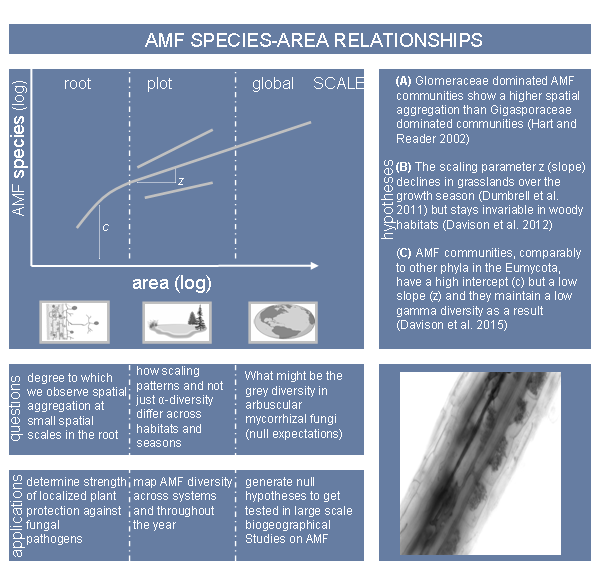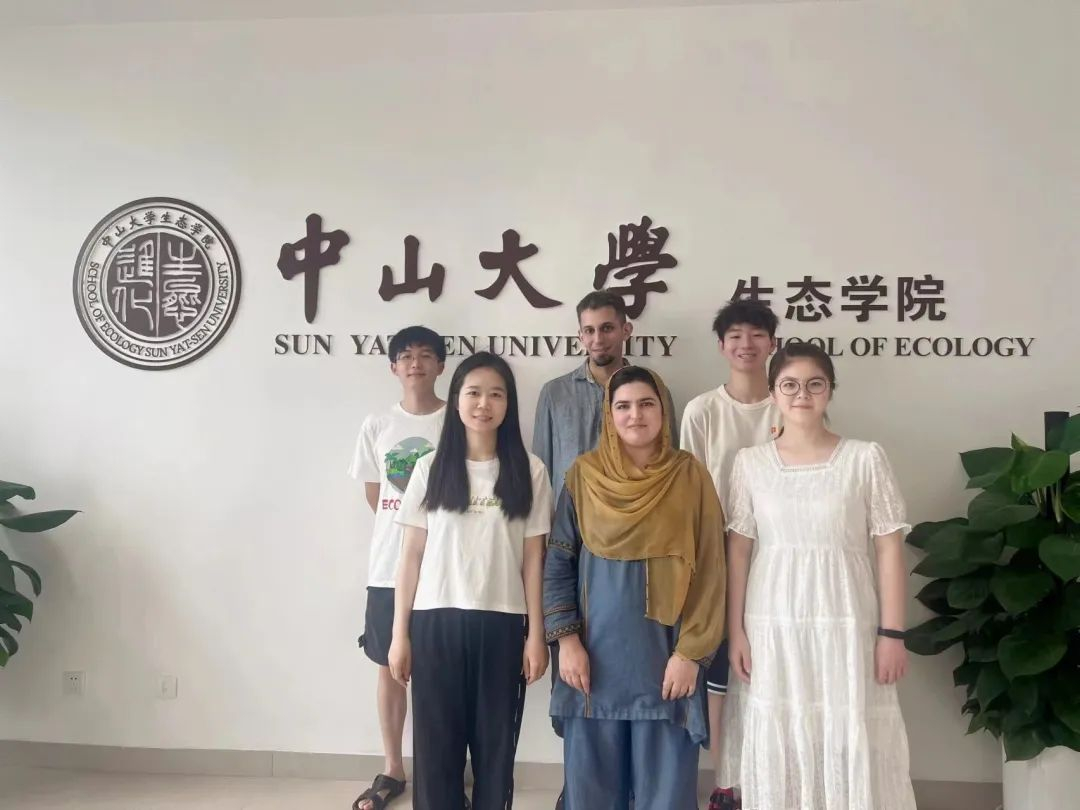It is a gas lab: New conceptual work proposes the use of species-area relationships to model microbial mutualisms
Symbioses involving microorganisms prevail in nature and are key to regulating numerous ecosystem processes and in driving evolution. A major concern in understanding the ecology and evolution of symbioses involving microorganisms arises in the effectiveness of sampling strategies to capture the contrasting size of organisms involved. In many mutualisms, including mycorrhizas and gut systems, hosts interact simultaneously with multiple smaller sized mutualists, the identity of which determines success for the host. This creates an issue when quantifying the diversity of mutualisms because sampling techniques fail to capture effectively the diversity of each partner. In the article the authors propose the use of species area relationships (SARs) to explicitly consider the spatial scale of microbial partners in symbioses, which we propose will improve our understanding of the ecology of mutualisms.
The authors introduce the article by highlighting that many mutualisms, including mycorrhizas and gut systems, are mediated by communities of microorganisms that interact with much larger hosts, and the identity of the microbes involved is a key determinant of the outcome of the symbiosis. By contrast, most studies describe the ecology of mutualisms in relation to biogeographical descriptors that suit best the much larger partner. Thus, there is a growing need to improve our understanding of endosymbiont ecology, particularly at fine scales, and our paper addresses this gap. Recent advances in upscaling with species are relationships (SARs) offer opportunities to address a range of exciting questions on endosymbionts.

Fig. 1 Overview of some open questions which we could address via integrating species-area relationships (SARs) into core mycorrhizal ecology, some likely applications of SARs and a set of three hypotheses. To describe SARs (top left panel), we use two parameters, the slope z and the intercept c (both describing the power law between area and richness). At fine spatial scales within a single root system, however, spatial aggregation of species, arising from the continuity of AM fungal structures in the roots (bottom right panel depicting a root of Fragaria vesca colonized with Rhizophagus irregularis and featuring arbuscules), leads to deviations from a perfect power law. To date most studies are concerned with the overall richness, to which they refer as α-diversity, of the AM fungal communities and do not try to decompose it to its two constituents. Because the sampling intensity and the laboratory approaches vary across studies, the estimates as a result are not comparable and it is hard to synthesize across studies. We believe that integrating species-area approaches in mycorrhizal ecology has a range of advantages: (i) we can assess the degree of spatial aggregation in fine spatial scales and compare across mycorrhizal systems (Hypothesis A); (ii) we can get mechanistic on the way scaling parameters change over time and across systems (Hypothesis B); (iii) we can cross synthesize with other phyla of fungi (Hypothesis C) or develop a new generation of null hypotheses for large-scale biogeographical studies targeting AM fungi.
The authors present an overview of SARs and how some assumptions (e.g. contingency of areas) have been relaxed in existing implementations on microbial systems. They then discuss likely benefits from abstracting mutualisms through SARs. These include (Fig. 1) generating null expectations of the global endosymbiont richness and combining observations from otherwise unstandardized surveys into larger syntheses, and forming questions at a micro-scale where we can observe spatial aggregations (e.g. differences across hosts). They finally support the ideas with the existing state of the art in relation to mycorrhizas and through generating additional questions specific to arbuscular mycorrhizas.
Article Link: https://www.sciencedirect.com/science/article/pii/S0966842X23001610
Summary
Stavros Veresoglou, a member of the It is a gas lab at the School of Ecology at Sun Yat-sen University has published in collaboration with David Johnson from the department of Earth and Environmental Sciences at the University of Manchester (UK), an article in Trends in Microbiology with the title Species-area relationships in microbial-mediated mutualisms. Stavros Veresoglou from the School of Ecology at Sun Yat-sen university is the first author and corresponding author, and David Johnson is the senior author.
Lab Advertisement

The expression “it is a gas” in English means that something is thoroughly entertaining. In the it is a gas lab, we work on greenhouse gases and we really enjoy ourselves (we are actually equipped with our own gas chromatograph).The focus of the lab is on global change biology and a lot of the ongoing research addresses mycorrhizas, symbiotic associations between the roots of terrestrial plants and fungi. For inquiries to join the lab please contact (inquiries can be in Chinese or in English) Junjiang Chen (陈俊江) at chenjj353@mail2.sysu.edu.cn.



